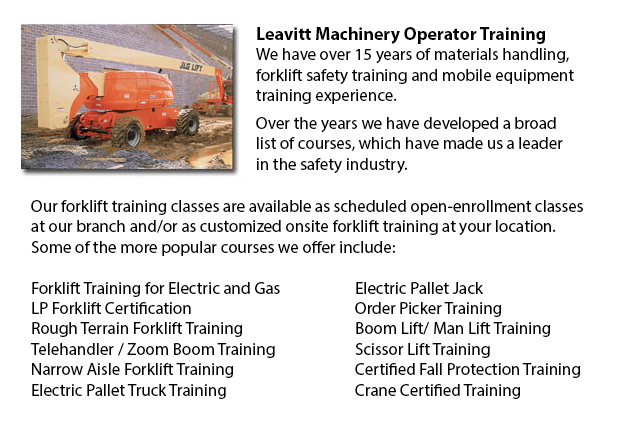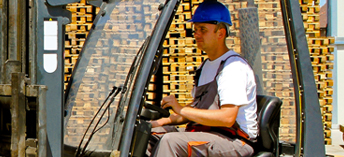
Boom Lift Certification Vancouver - Elevated work platforms allow maintenance operations and work to be done at levels which could not be reached by any other means. Workers using boom lifts and scissor lifts can be taught the safe operation of these equipments by receiving boom lift certification training.
Despite the array in lift style, applications and site conditions, all lifts have the potential for serious injury or death when operated unsafely. Falls, electrocution, crushed body parts, and tip-overs could be the terrible outcome of improper operating procedures.
In order to prevent aerial lift accidents, boom lift operators need to be trained by qualified workers in safely operating the certain kind of aerial lift they would be utilizing. Aerial lifts must never be modified without the express permission of the manufacturer or other recognized entity. If you are leasing a lift, ensure that it is properly maintained. Prior to utilizing, safety devices and controls should be inspected to ensure they are properly functioning.
Operational safety procedures are vital in avoiding incidents. Operators should not drive an aerial lift with the lift extended (though a few are designed to be driven with an extended lift). Set outriggers, if available. Always set brakes. Avoid slopes, but when needed use wheel chocks on slopes which do not exceed the slope limitations of the manufacturer. Adhere to manufacturer's weight and load limits. When standing on the platform of boom lifts, use a safety belt with a two-foot lanyard tied to the boom or basket or a full-body harness. Fall protection is not required for scissor lifts which have guardrails. Do not sit or climb on guardrails.
This course comprises the following topics: training and certification; safety tips to be able to prevent a tip-over; checking the travel path and work area; slopes and surface conditions; stability factors; other tips for maintaining stability; weight capacity; leverage; testing control functions; pre-operational inspection; mounting a vehicle; safe operating practices; power lines and overhead obstacles; safe driving procedures; PPE and fall protection; utilizing lanyards and harness; and preventing falls from the platform.
When successful, the trained employee would know the following: authorization and training procedures; pre-operational inspection procedures; how to avoid tip-overs; factors affecting the stability of scissor and boom lifts; how to use PPE, how to use the testing control functions and strategies to be able to avoid falls.
-
Telehandler Ticket Vancouver
Telehandler Ticket Vancouver - The telescopic handler or telehandler is a frequently used equipment in agricultural and industrial applications. This equipment is similar in appearance to a forklift and also functions in a similar way, even if teleha... More -
Forklift Operator Certification Vancouver
Forklift Operator Certification Vancouver - Forklift operator certification is usually needed for employees working within industrial, warehouse or construction environments to guarantee the safe operation of forklifts. Workplace training need to fol... More -
Certified Fall Protection Training in Vancouver
There are high numbers of injuries at work linked to falling and a lot of fall-related deaths reported each and every year. The majority of these instances might have been avoided with better training, better measures in place, and by correctly equip... More -
Forklift Training Course Vancouver
Forklift Training Course Vancouver - CSA and OSHA establish criteria for forklift safety training which meets existing standards and regulations. Anyone planning to utilize a forklift is needed to successfully complete safety training prior to using... More -
Overhead Crane Certification Vancouver
Overhead Crane Certification Vancouver - The overhead crane certification course is a program that is designed to assist trainees, even if they have literacy or language restrictions. The course comprises a practical hands-on training session and a c... More -
Forklift Instructor Training Vancouver
Forklift Instructor Training Vancouver - Forklift Instructor training certification is recommended for forklift operators who would like to become instructors. To qualify for forklift instructor training, operators must be able to prove they possess... More -
Crane / Overhead Crane / Truck Mounted Crane / Hydraulic Cranes Training in Vancouver
Overhead cranes are likewise referred to as bridge cranes. They are actually a type of crane which comprises a hook and line apparatus which runs along a horizontal beam which runs along two widely separated rails. Lots of overhead cranes can be foun... More -
Scissor Lift Safety Training Vancouver
Scissor Lift Safety Training Vancouver - A scissor lift is a kind of platform lift that moves vertically. The lift table is moved in a vertical motion because of criss-cross folding supports which are linked in what is referred to as a pantograph. Th... More

Forklift Training Vancouver
TOLL FREE: 1-888-254-6157
24389 Fraser Highway
Langley, British Columbia
forklifttrainingvancouver.com
Email Us
About Us


